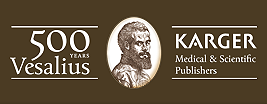team of experts in Vesalian studies, anatomy and medicine, medical history and Renaissance history has advised Karger on various aspects throughout the development and publication of The Fabric of the Human Body. The publisher thanks them for generously providing their expertise, time and ingenuity during this endeavor to make the New Fabrica a work that will serve its readership well.
Daniel H. Garrison
Daniel H. Garrison received his degrees from Harvard (A.B. Classics, 1959) and Berkeley (PhD Comparative Literature, 1968). He was a member of the Classics Department at Northwestern University from 1966 until his retirement in 2010. His publications have dealt chiefly with the understanding of Greek and Latin lyrics. These disciplines turned out to be uniquely valuable in detecting Vesalius’ reliance upon ancient texts and his allusive mode of writing. His publications include editions of Horace and Catullus, a monograph on the Hellenistic love epigrams, a prosopography of P. G. Wodehouse, and articles on the doubloon in Moby Dick and the development of the locus inamoenus in Latin poetry. His book on sexual culture in the Greek world led him to further study of the Greek conception of the body and Greek medicine. In other media, Garrison has contributed to History Channel videos on ancient sexual culture and prostitution in the Greek and Roman world.
His research on Vesalius has been funded by grants from the National Endowment for the Humanities, National Library of Medicine, and the Andrew W. Mellon Foundation. He continues to write on 16th-century anatomy. Garrison’s translation of another Vesalius work, Vesalius: The China Root Epistle: A New Translation and Critical Edition, published by Cambridge University Press, will be available in 2013.
Malcolm H. Hast
Malcolm Howard Hast is Professor Emeritus of Otolaryngology – Head and Neck Surgery and also past Professor of Cell and Molecular Biology (Anatomy) at Feinberg School of Medicine of Northwestern University. He is Fellow of the American Association for the Advancement of Science as well as Fellow of the Anatomical Society (UK) and a Chartered Biologist and Fellow of the Society of Biology (UK). He is also a recipient of The Gould International Award in Laryngology and a NATO Senior Fellowship in Science.
His publications include numerous articles on the neuromuscular physiology and anatomy of the larynx. His current research is at the Field Museum of Natural History on the comparative anatomy of the mammalian larynx.
Vivian Nutton
Vivian Nutton is Professor Emeritus of the history of medicine at the University College of London, and Honorary Professor in both history and classics at the University of Warwick. He is Fellow of the British Academy, the Academia Europaea, the Deutsche Akademie der Wissenschaften, and the Studio Fermano, as well as Honorary Fellow of the Royal College of Physicians. He has written extensively on the history of medicine from Hippocrates to Harvey. His most recent books include a major edition of Galen’s On Problematical Movements (2011), the first English translation and commentary on Galen’s Avoiding Distress (2012), and a revised edition of his Ancient Medicine (2013). In addition, a full description of Nutton’s findings from the Fabrica edition containing Vesalius’ own handwritten notes appears in the journal Medical History in October, 2012.
Hubert Steinke
Hubert Steinke is Director of the Institute of Medical History at the University of Bern in Switzerland. He is the author of several publications on medical history and his work has appeared in Annals of Science, Gesnerus, History and Philosophy of the Life Sciences, Bibliothèque d’Histoire des Sciences, Medical History, Science in Context.
Sachiko Kusukawa
Sachiko Kusukawa is a tutor and Fellow in History and Philosophy of Science at Trinity College, University of Cambridge. Her highly regarded 2012 publication, Picturing the Book of Nature, includes study of the illustrations in Vesalius’ work.
Ueli Dill
Ueli Dill, specialist in paleography and codicology at University of Basel’s library, has graciously provided time, constructive information and facsimiles of the original Fabrica for the publisher’s consultation.







